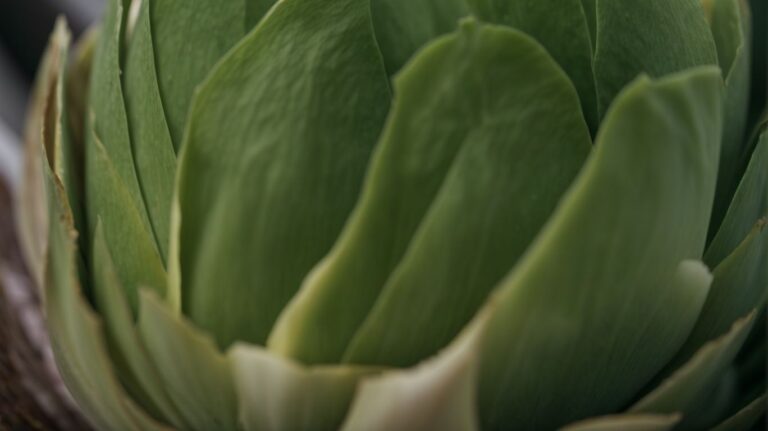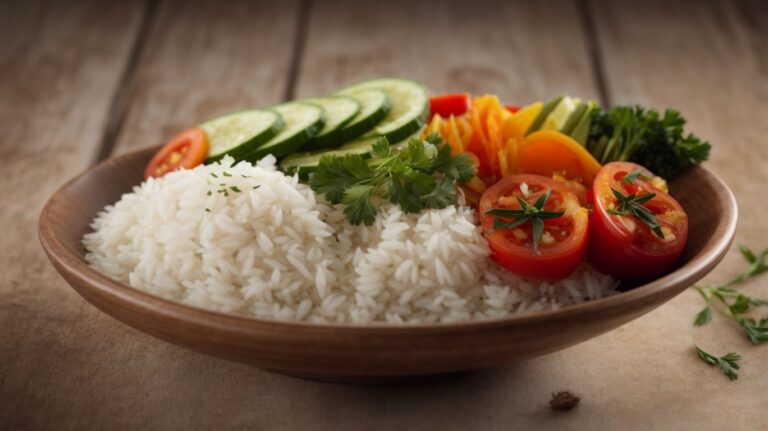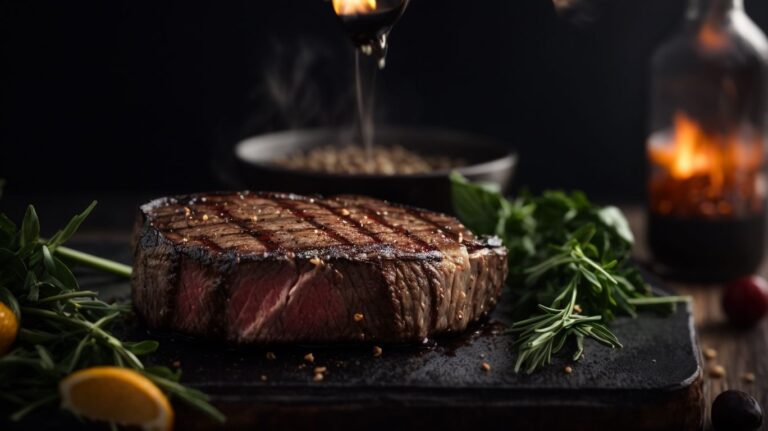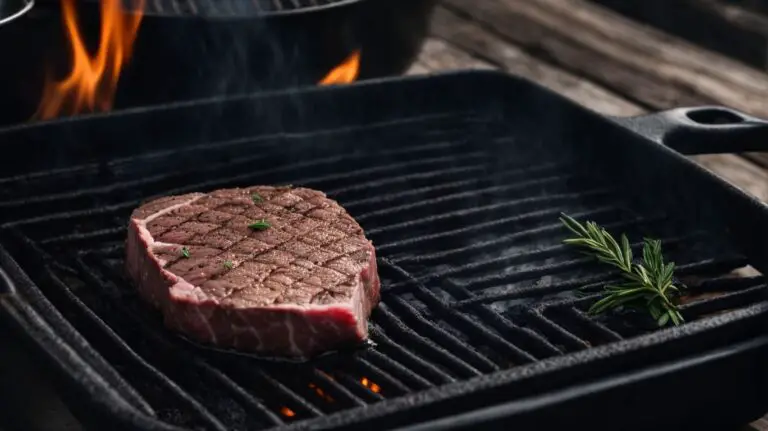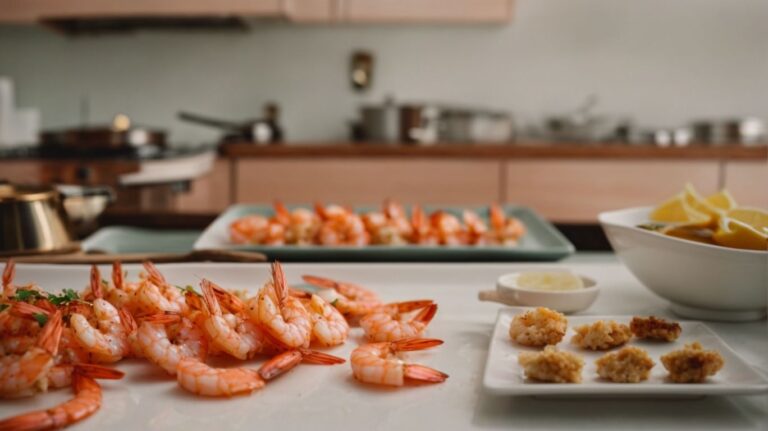How to Cook Salmon?
Salmon is a versatile and flavorful fish that can be prepared in a variety of ways.
Discover the best types of salmon for cooking, including the differences between wild and farmed salmon, as well as fresh and frozen options.
Explore preparation techniques, cooking methods, and tips for achieving perfectly cooked salmon every time. Whether you prefer pan-frying, baking, grilling, poaching, or broiling, we have you covered.
Learn about common mistakes to avoid and serving suggestions to elevate your salmon dishes. Get ready to impress your taste buds with delicious and perfectly cooked salmon!
Key Takeaways:
The Best Types of Salmon for Cooking
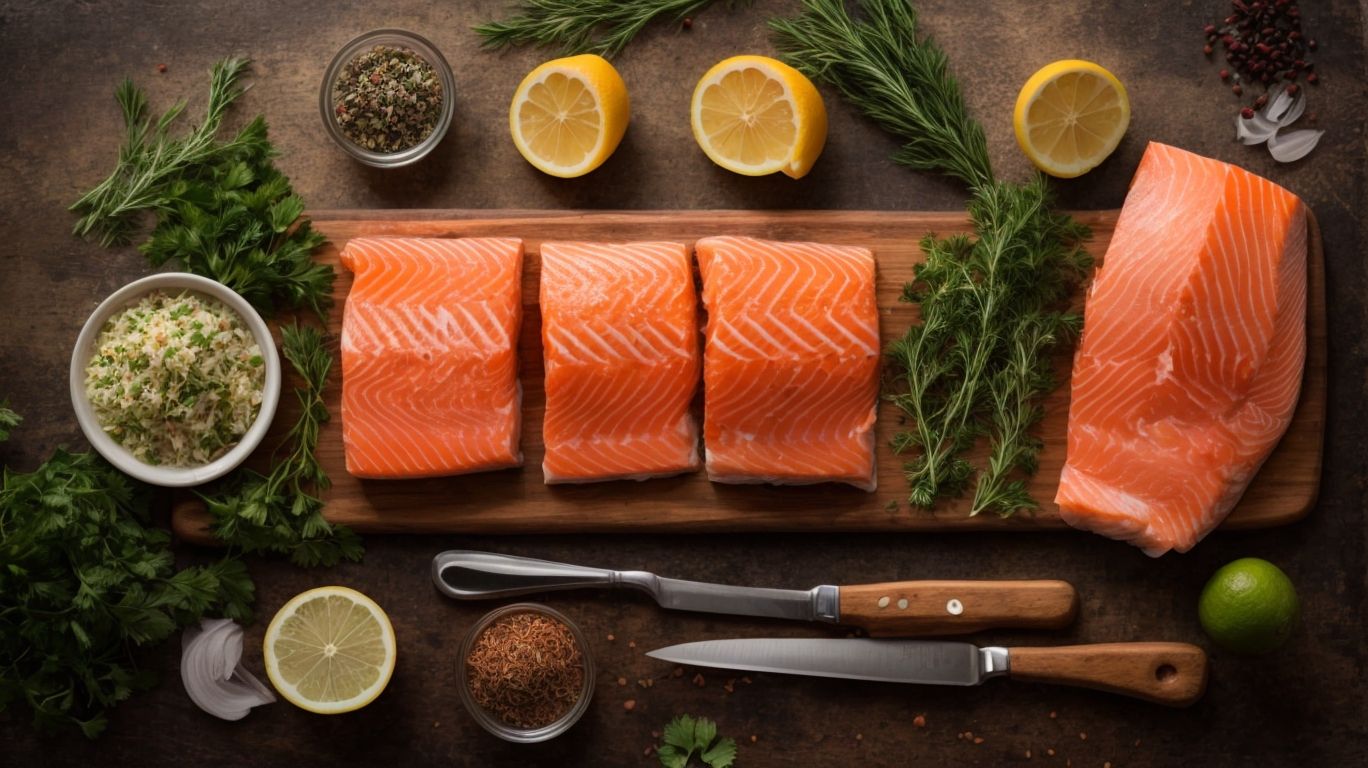
Credits: Poormet.Com – Paul Lopez
In terms of cooking salmon, selecting the best types is crucial for a delicious dish.
One of the key distinctions in salmon types is between wild-caught and farmed. Wild salmon tends to have a richer flavor due to its natural diet, while farmed salmon is often milder but has a more consistent supply.
When choosing between fresh and frozen salmon, freshness plays a significant role in the final taste. Fresh salmon is ideal for quick recipes like grilling or pan-searing, while frozen salmon can be convenient for meal prep and dishes where the texture is less crucial.
Wild vs. Farmed Salmon
When choosing between wild and farmed salmon, consider the flavor profiles and textures that each type offers.
Wild salmon, harvested from natural environments, generally have a richer, more robust flavor due to their varied diet of smaller fish and krill. This results in a firmer texture, ideal for grilling or searing to bring out its natural flavors.
On the other hand, farmed salmon, raised in controlled conditions, tend to have a milder taste and softer texture. This makes them perfect for delicate preparations like sushi or poaching, where their subtle flavor can be complemented with seasonings and sauces.
In the context of fine dining restaurants, chefs often prefer wild salmon for its intense flavor that stands out in complex dishes, such as citrus-glazed fillets or cedar-planked salmon. Farmed salmon, while more consistent in size and availability, shines in dishes requiring a more subtle flavor profile, like salmon carpaccio or crudo.
Fresh vs. Frozen Salmon
Deciding between fresh and frozen salmon depends on convenience, availability, and the desired cooking method.
Ingredients and taste are crucial factors when choosing between fresh and frozen salmon. Fresh salmon typically has a more vibrant flavor and firm texture, ideal for grilling or pan-searing. On the other hand, frozen salmon is convenient to store and can be a cost-effective option. Thawing frozen salmon properly is essential to maintain its taste and texture.
In terms of cooking methods, fresh salmon is generally preferred for dishes where the taste of the fish takes center stage, such as sushi or tartare. Frozen salmon can work well in recipes where the fish is mixed with other ingredients, like casseroles or pasta dishes.
While fresh salmon may require more effort in terms of prep work, such as removing pin bones, it offers a superior taste and texture. Frozen salmon, on the other hand, is easier to keep on hand and requires less immediate attention in terms of preparation.
Preparation for Cooking Salmon
Before cooking salmon, proper preparation is key to enhancing its natural flavors and ensuring a successful dish.
Thawing frozen salmon is the initial step. Ideally, place the salmon in the refrigerator overnight to thaw slowly. Once thawed, rinse the fish under cold water to remove any ice crystals. Next, descale the salmon by running the back of a knife against the skin to remove the scales. For pin bones, use a pair of fish tweezers to pull them out gently.
After preparing the salmon, it’s time to season or marinate it to accentuate its taste. A simple seasoning of salt and pepper can be just perfect, or you can opt for a flavorful marinade of your choice, such as a mix of olive oil, lemon juice, herbs, and spices. Let the salmon sit in the seasoning or marinade for at least 15-30 minutes before cooking to allow the flavors to penetrate the fish.
Thawing Frozen Salmon
Thawing frozen salmon properly is essential to retain its moisture and prevent flavor loss during cooking.
One common method to thaw frozen salmon is to place it in the refrigerator overnight. This slow thawing process allows the fish to defrost gently, helping to maintain its natural texture and taste.
For a quicker thawing method, you can submerge the sealed salmon package in cold water for a couple of hours, ensuring to change the water every 30 minutes to promote even thawing. Avoid using hot water or the microwave, as these methods can lead to uneven thawing and compromise the salmon’s quality.
Removing Scales and Pin Bones
Removing scales and pin bones from salmon ensures a pleasant dining experience without any unwanted textures or flavors.
Start by rinsing the salmon fillets under cold water to remove any loose scales or debris. Salting the fish before descaling can help the scales come off more easily. Use a sharp knife to scrape against the grain of the scales, working from the tail towards the head.
Next, gently run your fingers along the fillet to locate any pin bones protruding from the flesh. Use a pair of clean tweezers to grasp the bones firmly and pull them out in the direction they are angled. Once descaled and deboned, pat the fillets dry with a paper towel, season with pepper and other desired spices, ensuring a crispy exterior when cooked.
Seasoning and Marinating Salmon
Seasoning and marinating salmon can elevate its flavors and create a delightful golden crust when cooked.
When seasoning salmon, consider using a blend of herbs and spices like dill, parsley, garlic, and lemon zest for a fresh and zesty flavor profile. Marinating the fillets in a mixture of soy sauce, honey, and ginger can impart a savory-sweet balance that caramelizes beautifully when pan-seared. For a more robust taste, try a smoked paprika and cumin rub that adds depth and a hint of smokiness to the fish.
Cooking Methods for Salmon
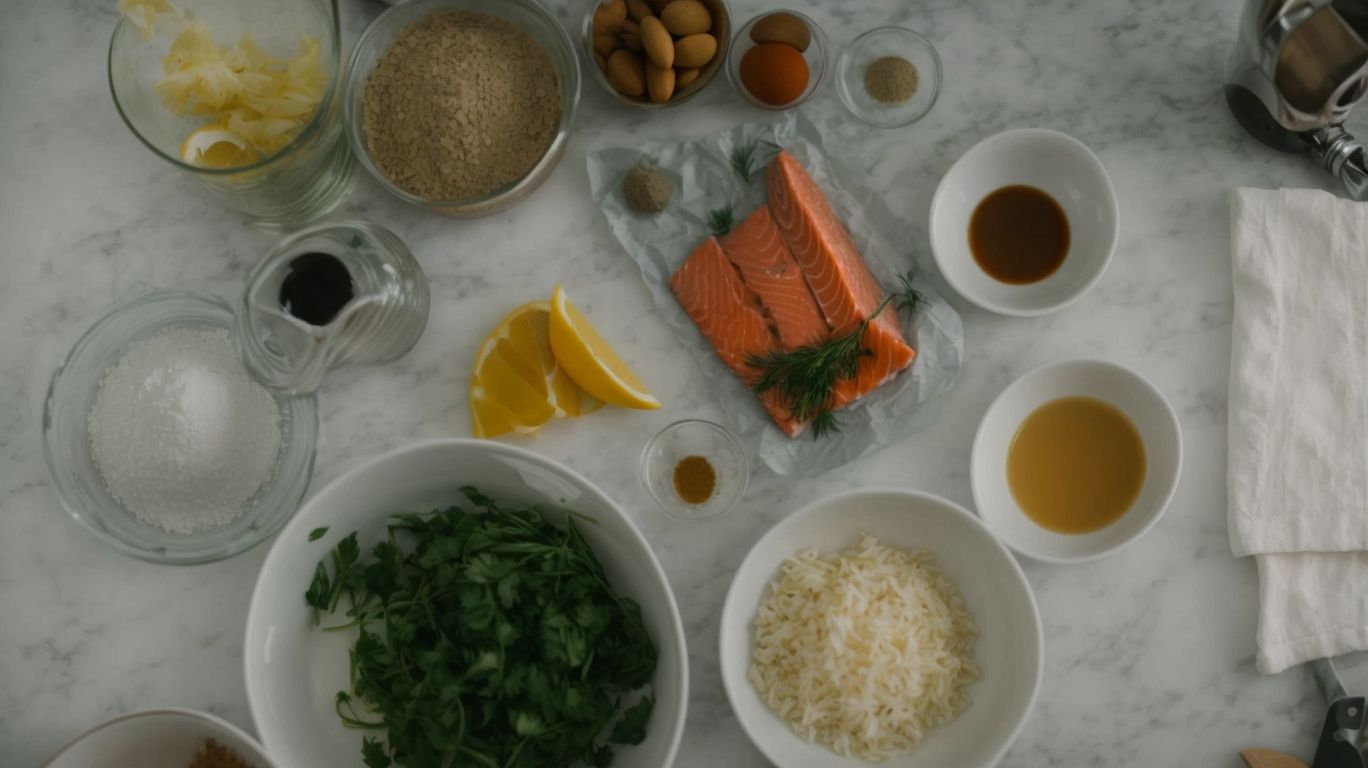
Credits: Poormet.Com – Patrick Rodriguez
Mastering different cooking methods for salmon opens up a world of culinary possibilities and flavors.
Whether you prefer the crispy skin achieved through pan-frying or the moist tenderness of poaching, each technique brings out unique qualities in this versatile fish.
When using a skillet for pan-frying, make sure it’s preheated over medium-high heat, allowing the salmon to cook for a few minutes on each side until golden brown.
On the other hand, for a healthier option, try baking the salmon in the oven at a moderate temperature, which helps retain its natural juices and flavors.
Pan-frying Salmon
Pan-frying salmon allows you to achieve a crispy exterior and tender interior with simple steps and minimal fuss.
To begin this culinary journey, start by selecting a fresh salmon fillet with vibrant color and firm texture, ensuring a delicious end result. Before heating your pan, pat the fillet dry with paper towels to remove excess moisture, a crucial step in achieving that desired crispiness. Season the salmon generously with your favorite herbs and spices – a classic combination of salt, pepper, and a hint of lemon zest works wonders. When the pan is hot, add a touch of oil and gently lay the seasoned salmon into the sizzling pan, skin side down, for a satisfying sizzle. Allow the fillet to cook undisturbed for a few minutes until the skin turns beautifully golden and crispy.
Baking Salmon
Baking salmon is a versatile method that allows for creative recipes like honey mustard-glazed or slow-roasted variations.
When opting for a honey mustard-glazed approach, the salmon’s natural flavors are enhanced with the sweet tang of honey and the pungent kick of mustard. To achieve this delightful combination, whisk together honey, Dijon mustard, a dash of soy sauce, and a hint of garlic to coat the salmon fillets before baking.
On the other hand, slow-roasting the salmon involves a gentle cooking process that results in tender, flaky fish. To slow-roast, season the salmon generously with a blend of herbs, lemon zest, and a drizzle of olive oil. Then, bake at a lower temperature to allow the flavors to develop slowly and meld beautifully with the fish.
Grilling Salmon
Grilling salmon imparts a smoky flavor that pairs well with vibrant accompaniments like pineapple salsa.
When preparing grilled salmon, start by brushing the fillets with a light coat of olive oil to prevent sticking to the grill. Season the fish generously with a mix of salt, pepper, garlic powder, and a hint of paprika for a flavorful profile. Preheat your grill to a medium-high heat and place the salmon skin-side down to achieve those distinctive grill marks. Allow the salmon to cook undisturbed for about 4-5 minutes before flipping it over for an additional 3-4 minutes of cooking.
For a delightful pairing, consider serving your grilled salmon with a refreshing homemade pineapple salsa. Chop fresh pineapple, red onion, jalapeno, cilantro leaves, and a splash of lime juice to create a zesty topping that complements the smoky salmon beautifully. The sweetness of the salsa balances the richness of the fish, creating a harmonious blend of flavors. Whether you’re hosting a summer barbecue or just craving a light, flavorful meal, this grilled salmon with homemade pineapple salsa will surely impress your taste buds.
Poaching Salmon
Poaching salmon results in a delicate texture that can be enhanced with creamy accompaniments like cucumber-dill salad.
When poaching salmon, it is important to start with fresh salmon fillets, ensuring they are skinless and boneless for easier preparation. To begin, prepare a poaching liquid by combining water, white wine, and aromatics like fresh herbs, lemon slices, and peppercorns in a large skillet or shallow pan.
- Gently bring the poaching liquid to a simmer over medium heat, making sure not to boil it.
- Season the salmon fillets with salt and pepper before placing them in the simmering liquid.
- Cover the pan and let the salmon poach for about 8-10 minutes, depending on the thickness of the fillets. You’ll know it’s done when the salmon flakes easily with a fork.
Once poached, carefully remove the salmon fillets from the liquid and allow them to rest briefly. Serve the poached salmon warm or chilled, alongside a refreshing cucumber-dill salad that complements the delicate flavor of the fish.
Broiling Salmon
Broiling salmon under high heat caramelizes the surface, creating delicious options like Southwestern maple-glazed salmon.
When preparing broiled salmon, it’s important to start with fresh, high-quality fillets. Begin by preheating your broiler and lining a baking sheet with foil for easy cleanup. Season the salmon with a blend of olive oil, salt, pepper, and your favorite herbs or spices. Place the seasoned salmon on the prepared baking sheet and broil it for a few minutes on each side until the surface is caramelized and the fish is cooked through.
For a twist on traditional broiled salmon, try experimenting with different seasonings and marinades such as a zesty citrus herb blend or a smoky chipotle rub. These variations can elevate the flavors and create a unique dining experience for your guests.
Tips for Perfectly Cooked Salmon
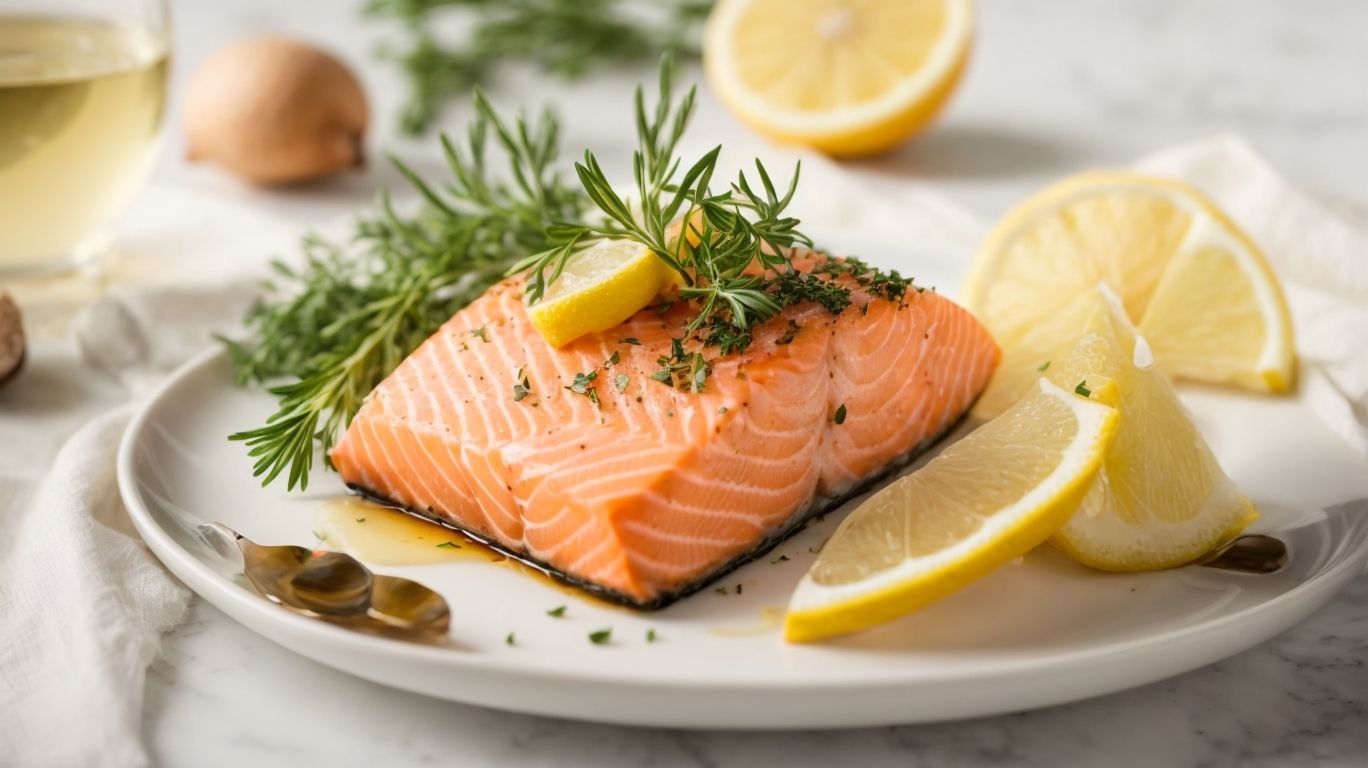
Credits: Poormet.Com – Zachary Miller
To ensure perfectly cooked salmon, follow key tips that balance crispiness, moisture, and flavor.
Checking the doneness of your salmon is crucial. A widely used method is to gently press the fillet with a fork; if it flakes easily and the color is opaque, it’s ready. Another way is to insert a knife slightly off-center in the thickest part; if it glides through with little resistance and the flesh is moist and slightly translucent at the center, it’s done. After cooking, let the salmon rest for a few minutes to allow the juices to redistribute, enhancing its moistness and flavor.
Checking for Doneness
Checking for doneness in salmon involves observing the color change and using tools like a nutrition calculator for accuracy.
When cooking salmon, a reliable indicator of doneness is the change in color from translucent to opaque. Look for the flesh to go from a vibrant pink to a lighter, more opaque hue. Another method is to gently press the salmon with a fork; if the fish easily flakes, it’s usually a sign that it’s fully cooked.
Alternatively, for a more scientific approach, utilize a nutrition calculator to measure the internal temperature of the salmon. The FDA recommends that salmon should reach an internal temperature of 145°F to ensure its safety to eat. This method guarantees precision in determining the exact doneness of your fish.
Resting Salmon after Cooking
Allowing salmon to rest after cooking preserves its moisture and ensures a succulent dining experience.
During the resting period, the moist heat within the salmon fillets redistributes, creating a more even and juicy texture throughout the fish. This process also enhances the natural flavors and allows them to develop fully, resulting in a more flavorful dish.
When the salmon is given time to rest, the skin/surface of the fillets relaxes, making it easier to remove without tearing the flesh beneath. This can significantly improve the presentation of your dish, as intact fillets with crispy skin add both visual appeal and texture to your meal.
Serving Suggestions for Salmon
Pairing salmon with the right accompaniments such as olive oil-based salads or fresh herbs enhances the overall dining experience.
For a delightful salad to pair with your salmon, consider a Mediterranean-inspired mix of cherry tomatoes, feta cheese, cucumbers, and Kalamata olives drizzled with a zesty olive oil vinaigrette.
- Another fantastic flavor combination is to top your salmon with a herb crust made from a blend of parsley, dill, and lemon zest, adding a burst of fresh flavors to each bite.
- Create a simple marinade using olive oil, garlic, and a touch of honey to glaze your salmon before grilling or roasting for a succulent and flavorful dish.
Common Mistakes to Avoid when Cooking Salmon
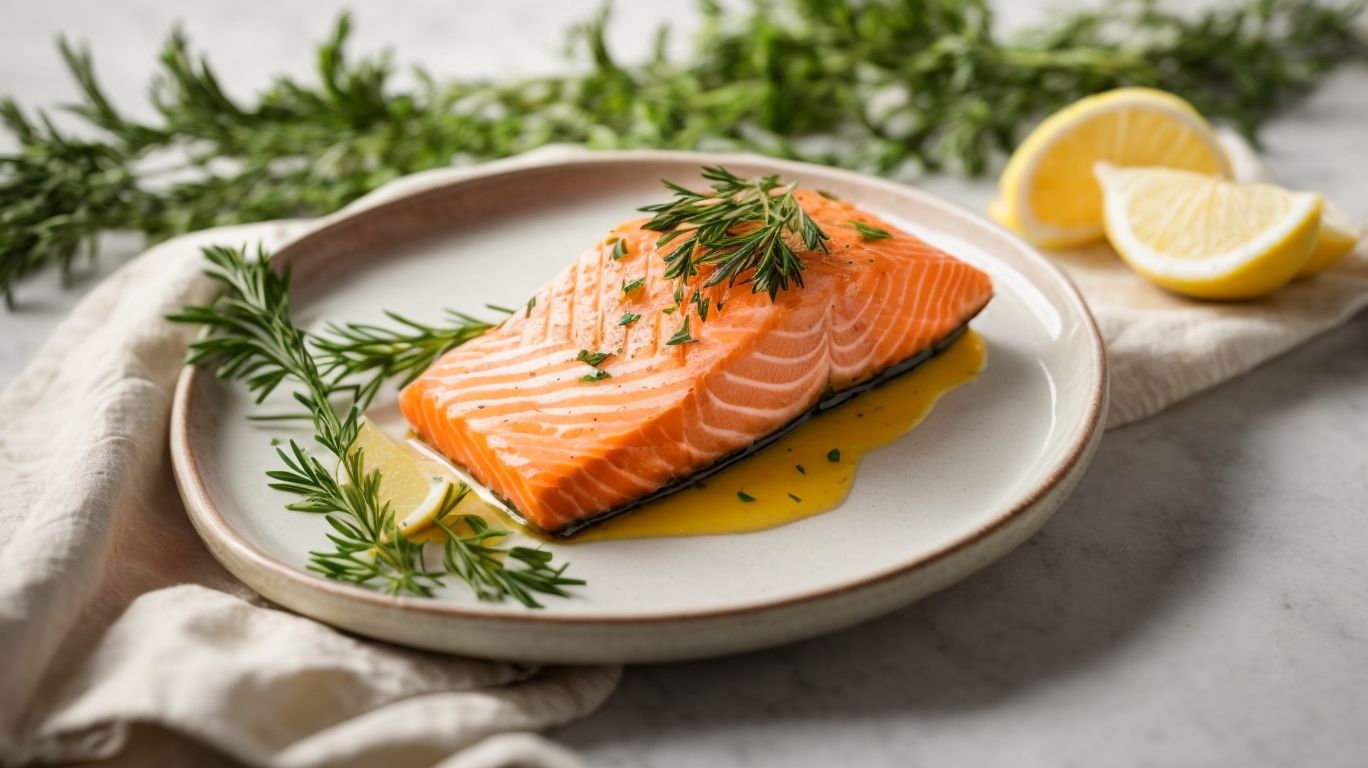
Credits: Poormet.Com – Andrew Carter
Steer clear of common mistakes like overcooking salmon or neglecting proper seasoning to deliver a memorable dining experience for your family.
One of the most common errors people tend to make when preparing salmon is overcooking it, which results in a dry and tough texture. To ensure your salmon stays moist and flavorful, aim to cook it until it reaches an internal temperature of 145°F (62.8°C). Another pitfall to avoid is under-seasoning; salmon’s robust flavor pairs well with various herbs and spices, so don’t be afraid to add a splash of lemon juice, a sprinkle of dill, or a pinch of garlic powder.
Overcooking Salmon
Overcooking salmon can result in a dry, rubbery texture that even a fifth grader can spot, so it’s essential to follow precise cooking instructions.
When salmon is overcooked, it loses its delicate, flaky nature and can easily turn into a tough, unappetizing dish.
Imagine biting into a piece of salmon that resembles a piece of shoe leather rather than the moist, tender fish you were expecting – it’s not a pleasant experience! Even renowned chefs like Gordon Ramsay emphasize the importance of not letting the fish get burnt or overcooked.
The cooking method plays a crucial role in ensuring your salmon turns out perfectly cooked, whether it’s through baking, grilling, or pan-searing.
Not Seasoning or Marinating Salmon
Skipping the seasoning or marinating process can rob salmon of its best flavors and disappoint even the most ardent seafood lovers.
When preparing salmon, ensuring it is seasoned and marinated properly can truly elevate the dish to a whole new level. The seasoning process helps to add depth and balance to the natural flavors of the fish, while marinating allows the flavors to penetrate deeply into the flesh of the salmon.
One crucial tip is to always cook salmon with the skin side down first. This ensures a crispy skin and helps to lock in the juices, keeping the fillets moist and flavorful. Seafood enthusiasts often love the combination of perfectly seasoned salmon with a crispy skin that complements the tender flesh.
Using the Wrong Cooking Method for the Type of Salmon
Selecting the right cooking method based on the type of salmon ensures a perfect dish every time, whether it’s for immediate consumption or meal prepping.
For reheating leftovers, methods such as sautéing, grilling, or pan-searing are ideal to maintain the salmon’s texture and flavor. On the other hand, if you’re preparing meals in advance, techniques like baking or poaching can help keep the salmon moist and tender, ready to be incorporated into your dishes later. Understanding these nuances can elevate your dishes to a restaurant-style quality, enticing your taste buds with each bite.
Conclusion and Final Thoughts
Cooking salmon can be a delightful culinary adventure that offers a blend of simplicity, delicious flavors, and the versatility to experiment with ingredients like fresh ginger.
Salmon’s naturally robust flavor pairs well with a variety of seasonings such as herbs, citrus, and teriyaki sauce. Whether you choose to grill, bake, or pan-sear it, the result is always a succulent and flaky dish that is as healthy as it is delicious. Incorporating ginger into your salmon recipes not only enhances the taste but also introduces a subtle warmth and depth to the dish.
- With just a handful of ingredients and a few simple steps, you can create restaurant-quality salmon dishes right in your own kitchen.
- Don’t be afraid to get creative and try out different marinades or glazes to personalize your salmon recipes to suit your palate.
Frequently Asked Questions
How to Cook Salmon?
What is the best way to cook salmon?
There are several ways to cook salmon, but the best method is baking. This ensures even cooking and a beautifully flaky texture.
How to Cook Salmon?
Can I cook salmon without an oven?
Yes, you can cook salmon on a stovetop using a skillet or grill pan. Just make sure to monitor the cooking time and temperature carefully.
How to Cook Salmon?
What seasonings go well with salmon?
Salmon pairs well with a variety of seasonings, including lemon, garlic, dill, and soy sauce. Experiment with different combinations to find your favorite.
How to Cook Salmon?
How long should I cook salmon for?
The cooking time for salmon depends on the thickness of the fillet. As a general rule, bake for 4-6 minutes per 1/2 inch of thickness at 400 degrees Fahrenheit.
How to Cook Salmon?
Can I cook frozen salmon?
Yes, you can cook frozen salmon. Just make sure to thaw it properly before cooking, either in the refrigerator or using the defrost setting on your microwave.
How to Cook Salmon?
What is the best way to tell if salmon is cooked?
The best way to tell if salmon is cooked is by using a meat thermometer. The internal temperature should reach 145 degrees Fahrenheit for it to be fully cooked. Alternatively, you can also check for the flesh to be opaque and flake easily with a fork.


